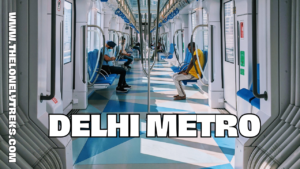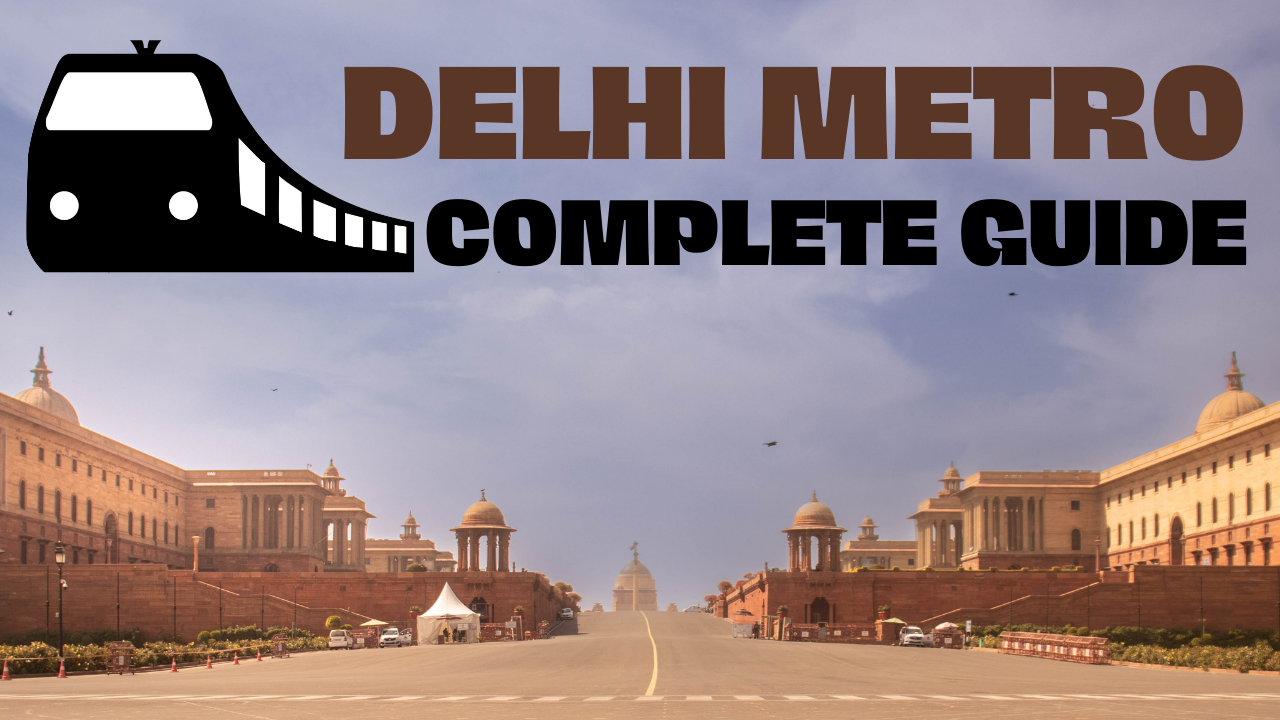The Delhi Metro is a lifeline for millions of people residing in and visiting the bustling capital city of India. As one of the largest and most efficient metro systems in the world, it connects various parts of Delhi and its neighboring regions, providing a reliable, time-saving, and eco-friendly mode of transportation. This article serves as a comprehensive guide to the Delhi Metro, covering its history, network, ticketing system, facilities, safety measures, environmental benefits, future expansion plans, and tips for navigating the system effectively.
History of Delhi Metro
The Delhi Metro project was initiated in the early 1990s to address the growing transportation needs of the city. Construction began in 1998, and the first section of the metro network, known as the Red Line, was opened to the public in 2002. Since then, the metro has witnessed remarkable growth, with the addition of new lines and extensions. The Delhi Metro has become an emblem of modern infrastructure and efficient public transportation in India.
Delhi Metro Network
The Delhi Metro network comprises several lines that crisscross the city and its suburbs. Currently, it consists of seven color-coded lines: Red Line, Yellow Line, Blue Line, Green Line, Violet Line, Pink Line, and Magenta Line. These lines cover major residential areas, commercial hubs, tourist attractions, and transportation hubs, providing connectivity to diverse parts of the city. The metro network is constantly expanding to accommodate the growing population and alleviate traffic congestion.

Delhi Metro Fare Structure and Ticketing System
The Delhi Metro operates on an automatic fare collection system. Commuters can obtain rechargeable smart cards, known as “Metro Cards,” or purchase tokens for a single journey. The Delhi Metro fare structure is distance-based, with different fare slabs depending on the distance traveled. Passengers can easily recharge their Metro Cards at ticket counters or through automated recharge machines available at stations. The Delhi Metro offers various types of cards, including tourist cards and daily passes, catering to different travel needs.
Mobile Based QR Tickets
The Delhi Metro plans to phase out the token system completely and plans to roll out mobile-based QR tickets very soon. This will make travel by Delhi Metro smoother, seamless and simple. There will be no need for people to queue at the counters and physically buy tickets.
Facilities and Services
The Delhi Metro is equipped with numerous facilities and services to enhance the commuting experience for passengers. Metro stations are designed to be user-friendly, with amenities such as elevators, escalators, and ramps for easy accessibility. Stations also have clean washrooms, drinking water facilities, and seating areas for passengers’ convenience. The metro system provides free Wi-Fi at select stations, allowing commuters to stay connected during their journeys.
Delhi Metro Map
The Delhi Metro Map is a visual representation of the city’s extensive and ever-expanding metro network. This map serves as a crucial guide for commuters and visitors alike, offering a clear overview of the various metro lines that crisscross the bustling metropolis. As one of the most well-organized and efficient metro systems in the world, the Delhi Metro consists of different colored lines, each connecting key destinations across the National Capital Region.

The map showcases a comprehensive network of lines, including the Red Line, Yellow Line, Blue Line, Green Line, Violet Line, Pink Line, Magenta Line, and Airport Express Line. Each line is color-coded for easy identification, and its respective stations are displayed along the route. The network spans across diverse areas of Delhi, connecting prominent landmarks, commercial centers, educational institutions, and residential neighborhoods.
The Red Line, for instance, connects Rithala in the northwest to Shaheed Sthal (New Bus Adda) in the northeast. The Yellow Line, one of the busiest and most significant, connects Samaypur Badli in the north to HUDA City Centre in the south, covering a vast portion of Delhi’s urban expanse.

The Blue Line is one of the longest and connects Dwarka in the southwest to Noida Electronic City/Vaishali in the southeast, passing through central Delhi. The Green Line connects Inderlok/Kirti Nagar in the west to Brigadier Hoshiyar Singh in the northwest, providing essential connectivity to western parts of Delhi.
The Violet Line, Pink Line, and Magenta Line further enhance connectivity, serving different corridors and facilitating seamless travel across the city’s diverse neighborhoods. The Airport Express Line offers a swift link between Indira Gandhi International Airport and the city center, ensuring a hassle-free transit experience for air travelers.
The Delhi Metro Map is not just a navigational tool but a representation of progress and urban development. It symbolizes the city’s commitment to providing its residents with a reliable, comfortable, and eco-friendly mode of transportation. As the city continues to evolve, the metro network expands, bringing more areas under its purview and easing the daily commute for millions of people.
Old Delhi Metro Station
Old Delhi Metro Station and New Delhi Metro Station are two important stations on the metro route that play pivotal roles in providing seamless access to the railway stations in Delhi. Located strategically, these metro stations serve as crucial interchanges, facilitating convenient transfers between the Delhi Metro and the Indian Railways network.
Old Delhi Metro Station, situated near the iconic Red Fort and Chandni Chowk area, is a bustling hub that caters to both locals and tourists. It offers easy access to the historic Old Delhi Railway Station, commonly known as Delhi Junction. Commuters can swiftly transition from the metro to the railway station, and vice versa, making it a preferred choice for those arriving or departing by train.
New Delhi Metro Station
New Delhi Metro Station, located in the heart of the city, is an important interchange station connecting the Yellow Line and the Airport Express Line. It stands adjacent to the grand New Delhi Railway Station, also known as NDLS, which is one of the busiest railway terminals in India. Travelers arriving or departing from this major railway station can seamlessly transfer to the Delhi Metro, ensuring a smooth and time-efficient journey.
The Airport Express Line
The Airport Express Line is an essential and time-saving link that connects the heart of Delhi with the Indira Gandhi International Airport, one of the busiest airports in India. This dedicated metro line offers travelers a swift and hassle-free journey, ensuring efficient connectivity between the city center and the airport terminals.
Running on a separate track, the Airport Express Line provides a direct and non-stop service, allowing passengers to reach the airport quickly and comfortably. With state-of-the-art amenities and modern coaches, the metro ride offers a seamless and pleasant experience for both domestic and international travelers.
The convenience of the Airport Express Line is particularly appreciated by those with tight schedules or early morning or late-night flights. It eliminates the uncertainties of road traffic, providing a reliable alternative for airport-bound travelers, sparing them from potential delays and uncertainties.
Additionally, the Airport Express Line plays a crucial role in promoting sustainable transportation, as it significantly reduces vehicular traffic to the airport, thereby contributing to a greener and cleaner environment.
Delhi Metro Routes to NCR Towns
The Delhi Metro, renowned for its extensive network and efficient connectivity, serves as a lifeline for commuters in the National Capital Region (NCR). Apart from connecting various parts of Delhi, the metro system also extends its reach to neighboring towns in the NCR, including Faridabad, Gurgaon, Noida, and Greater Noida. These towns are vital economic and residential hubs, and the availability of metro connectivity has significantly enhanced transportation convenience for residents and visitors alike. This article provides an overview of the Delhi Metro routes to these NCR towns, facilitating easy navigation and exploring the diverse offerings of each destination.

Delhi Metro to Faridabad
Faridabad, a bustling industrial city in Haryana, is seamlessly connected to Delhi through the Violet Line of the Delhi Metro. The Violet Line, which spans from Kashmere Gate in Delhi to Escorts Mujesar in Faridabad, serves as a vital transportation link between the two cities. Commuters can board the metro at any of the stations along the Violet Line in Delhi, such as Kashmere Gate, Central Secretariat, or Lajpat Nagar, and travel comfortably to Faridabad. The metro offers a quick and convenient mode of travel, bypassing the traffic congestion often experienced on the roads.
Delhi Metro to Gurgaon
Gurgaon, now known as Gurugram, is a major corporate and commercial hub in Haryana. The Delhi Metro connects Gurgaon through the Yellow Line, extending from Samaypur Badli in Delhi to HUDA City Centre in Gurgaon. Commuters can board the Yellow Line from any station in Delhi, such as Chandni Chowk, Rajiv Chowk, or New Delhi Railway Station, and travel smoothly to Gurgaon. This metro route has been instrumental in improving connectivity and reducing commuting time for thousands of professionals working in Gurgaon’s corporate offices and IT parks.
Delhi Metro to Noida
Noida, an integral part of the NCR, is seamlessly connected to Delhi through the Blue Line and Magenta Line of the Delhi Metro. The Blue Line, stretching from Dwarka Sector 21 in Delhi to Noida Electronic City in Noida, offers a direct metro route to Noida. Commuters can board the Blue Line from various stations in Delhi, such as Rajouri Garden, Karol Bagh, or Yamuna Bank, and travel to Noida with ease. Additionally, the Magenta Line, an extension of the Blue Line, further enhances connectivity to Noida by connecting it to areas like Janakpuri and South Delhi.
Delhi Metro to Greater Noida
Greater Noida, an emerging city in Uttar Pradesh, is connected to Delhi through the Aqua Line of the Delhi Metro. The Aqua Line, which spans from Noida Sector 51 in Noida to Depot Station in Greater Noida, offers a convenient metro route to Greater Noida. Commuters can board the Aqua Line at any of the stations in Noida, such as Botanical Garden or Noida Sector 18, and travel seamlessly to Greater Noida. This metro route has significantly improved connectivity to Greater Noida, facilitating efficient travel for residents and providing access to educational institutions and commercial centers in the area.
Safety and Security Measures
Ensuring the safety and security of passengers is a top priority for the Delhi Metro. The system employs a range of measures to maintain a safe and secure environment. CCTV cameras are installed throughout the stations and trains for surveillance purposes. Baggage scanners and metal detectors are used to screen passengers’ belongings before entering the stations. Trained security personnel are present to handle any emergencies and ensure a safe travel experience for all.
Environmental Benefits of Delhi Metro
The Delhi Metro has made significant contributions to reducing pollution and combating traffic congestion in the city. By encouraging people to opt for public transportation, the metro helps decrease the number of private vehicles on the road, thereby reducing carbon emissions. The use of electric trains further contributes to a cleaner and greener environment. The Delhi Metro stands as a shining example of sustainable urban transportation, promoting a more eco-friendly and livable city.
Future Expansion Plans
The Delhi Metro has ambitious plans for future expansion to further enhance connectivity and ease commuting in Delhi and its neighboring regions. Proposed extensions and new lines are under construction, which will connect more areas and improve accessibility. The expansion plans include the addition of the Silver Line, Aero Line, and several other corridors. These projects will extend the reach of the metro network and cater to the evolving transportation needs of the city.
Exploring Delhi through the Metro
The Delhi Metro not only serves as a means of transportation but also offers an opportunity to explore the vibrant city. Many popular tourist attractions, historical sites, markets, and cultural centers are conveniently accessible via the metro. Passengers can visit iconic landmarks like the Red Fort, Qutub Minar, India Gate, and Chandni Chowk using the metro network. The Delhi Metro is a gateway to the rich cultural heritage and diverse experiences that Delhi has to offer.
Tips for Riding the Delhi Metro
To make the most of your Delhi Metro experience, here are a few tips to keep in mind:
- Plan your journey using the metro map and consider peak hours to avoid crowded trains.
- Keep your Metro Card or token handy while traveling and ensure it is adequately recharged.
- Respect designated seating areas for senior citizens, women, and people with disabilities.
- Be mindful of fellow passengers and maintain proper queue etiquette while boarding and alighting from trains.
- Familiarize yourself with station names, line colors, and interchanges to navigate the metro network smoothly.
- Follow safety instructions and guidelines provided by the Delhi Metro authorities
The Delhi Metro Museum
The Delhi Metro Museum at Patel Chowk offers a captivating journey through the history and development of one of India’s most remarkable transportation achievements, the Delhi Metro. Situated in close proximity to Patel Chowk Metro Station, this museum serves as a testament to the innovative vision and meticulous planning that brought the city’s metro system to life.
As visitors step into the museum, they are greeted by an immersive experience that combines interactive exhibits, multimedia presentations, and carefully preserved artifacts. The museum delves into the inception of the Delhi Metro project, tracing its roots back to the early planning stages and the challenges faced during its construction. Through detailed displays, visitors gain insight into the groundbreaking technologies and engineering marvels that have propelled the metro into a model of efficiency and sustainability.
The museum also highlights the profound impact of the Delhi Metro on the city’s urban landscape and daily life. It showcases how this modern transport system has significantly eased traffic congestion, reduced pollution, and enhanced connectivity across the National Capital Region.
One of the museum’s highlights is a simulated ride experience, allowing visitors to virtually experience the thrill of traveling through the metro’s bustling underground tunnels and elevated tracks. This interactive feature leaves a lasting impression on guests, enabling them to appreciate the seamless integration of design and technology that characterizes the Delhi Metro.
In addition to its informative displays, the museum serves as an educational platform, offering insights into the future expansion plans and ongoing innovations of the Delhi Metro. It promotes awareness of sustainable urban transportation and encourages visitors to be active advocates for environmentally friendly commuting options.
The Delhi Metro Museum at Patel Chowk stands as a testament to the dedication and hard work of the countless individuals who contributed to making the Delhi Metro a shining example of modern public transport. Whether one is a metro enthusiast, a history buff, or simply curious about the city’s development, a visit to this museum is sure to leave a deep appreciation for the transformative power of efficient mass transit systems.
Conclusion
The Delhi Metro has revolutionized the way people travel in Delhi, offering a fast, efficient, and eco-friendly mode of transportation. With its extensive network, state-of-the-art facilities, and commitment to safety, the metro system continues to redefine urban mobility in the city. Whether you are a resident or a visitor, exploring Delhi through the metro provides a convenient and enriching experience, connecting you to the heart of the city and its myriad attractions.
Suggested Reading: 5 Must have Travel Books
The Delhi Metro has played a transformative role in connecting Delhi with neighboring towns in the NCR, making daily commuting more convenient and efficient for residents and visitors. The metro routes to Faridabad, Gurgaon, Noida, and Greater Noida have not only reduced travel time but also alleviated the burden of traffic congestion. With seamless connectivity provided by the metro, these NCR towns have witnessed increased economic growth, improved accessibility, and enhanced quality of life for their inhabitants. Whether it’s for work, leisure, or exploration, the Delhi Metro routes to these NCR towns offer a reliable and comfortable mode of transportation for all.
Recommended Books on Delhi Metro
Recent Posts
FAQ
Most frequent questions and answers
Yes, Metro Cards are valid for travel on all lines of the Delhi Metro network.
Yes, you can carry small luggage on the Delhi Metro, but it should not obstruct or inconvenience other passengers.
The Delhi Metro offers a 10% discount on the fares on Metro Cards. This is comparison to the tokens bought at the counters.
Yes, the Delhi Metro is designed to be accessible for people with disabilities, with provisions such as elevators, ramps, and designated seating areas. Further, at many stations, there are tactile guide paths that help visually handicapped people to move from the entrance of the Metro Station to the Train door without any assistance.

